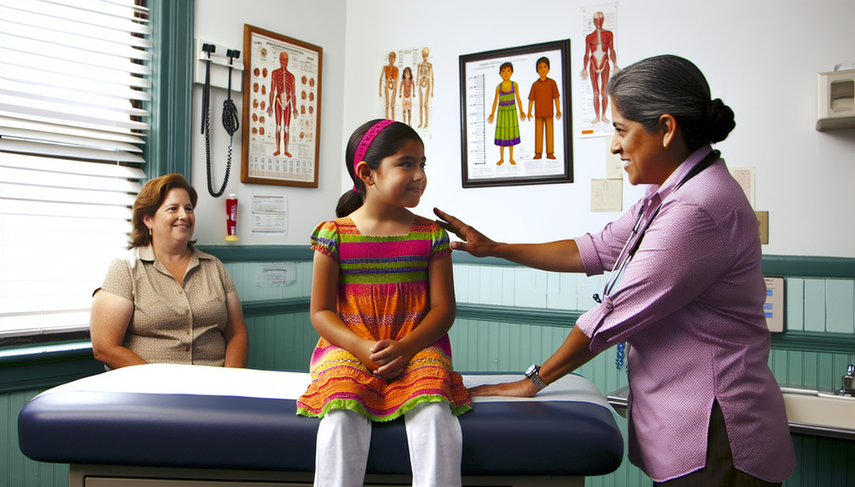Turner Syndrome: Recognizing Short Stature and Differentiating from Other Conditions in Karyotype 45,X

The Turner syndrome is a genetic condition that affects females and is characterized by the presence of a karyotype 45,X. One of the most common manifestations of this syndrome is short stature, which can be an early sign for its diagnosis. However, short stature can also be a symptom of other conditions, making differentiation crucial for appropriate management.
Recognizing Short Stature in Turner Syndrome
Turner syndrome presents with a series of clinical features, with ovarian dysgenesis and short stature being the most prominent. The short stature in these patients is generally proportional, meaning that all body parts are uniformly reduced. This pattern differs from that observed in other short stature conditions, such as Noonan syndrome, where short stature may be accompanied by specific dysmorphic features.
A study conducted at a single center found that short stature was the primary reason for referral for the diagnosis of Turner syndrome. However, not all patients with this syndrome present with extreme short stature, underscoring the importance of considering other clinical signs such as webbed neck, residual lymphedema, and hyperconvex nails for a more accurate diagnosis.
Differentiation from Other Conditions
The differentiation of growth differentiation delay in the context of Turner syndrome is essential to avoid misdiagnosis. For example, monosomy 18p and Noonan syndrome may present with similar clinical features, such as short stature and certain facial dysmorphisms. However, each of these conditions has a unique genetic and clinical profile that must be considered.
Additionally, it is important to note that the karyotype 45,X is not exclusive to Turner syndrome. There are cases of mosaicism where chromosomal combinations can complicate the diagnosis, as seen in complex mosaics that include other chromosomal abnormalities.
Conclusions
The diagnosis of Turner syndrome requires careful evaluation of short stature and other clinical signs. Differentiating from other conditions with similar symptoms is crucial for appropriate management and to avoid unnecessary treatments. Early and accurate identification of this syndrome allows for timely intervention, thereby improving the quality of life for affected patients.
Referencias
- [1] Noonan syndrome: genetic and clinical update and treatment options
- [2] Monosomy 18p
- [3] Clinical and cytogenetic features of 516 patients with suspected Turner syndrome - a single-center experience
- [4] Do you know this syndrome? Noonan syndrome
- [5] Acromegaly accompanied by Turner syndrome with 47,XXX/45,X/46,XX mosaicism
Created 13/1/2025
